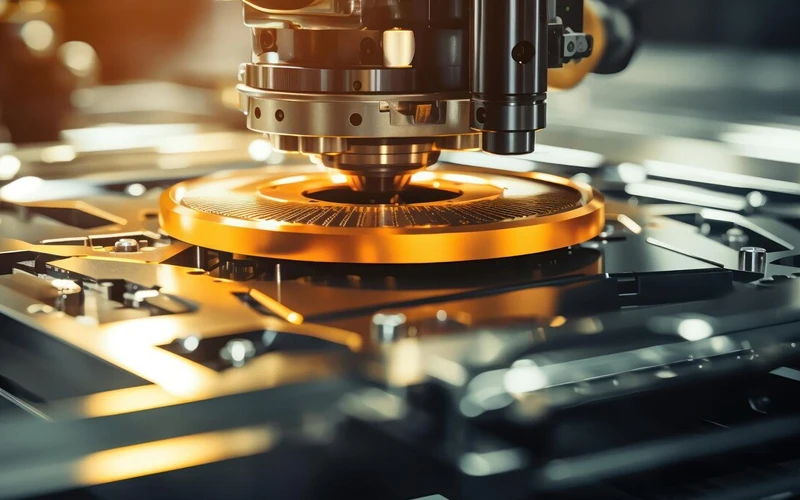
The Evolution of CNC Machines: From Origins to Modern Innovations
CNC (Computer Numerical Control) machines have revolutionized manufacturing and industrial processes. These machines, which are controlled by computers to perform precise operations, have come a long way since their inception. This article delves into the origins of CNC machines, their evolution over the years, and the modern innovations that continue to push the boundaries of manufacturing technology.
The Origins of CNC Machines
The concept of CNC machines dates back to the early 1940s, during World War II. The need for more precise and efficient production methods was paramount, especially for the aerospace industry. The earliest precursor to CNC machines was the Numerical Control (NC) machine, developed by John T. Parsons and Frank L. Stulen. These machines used punched tape to direct the movement of machine tools, which was a significant advancement over manual control methods.
The real breakthrough came in the 1950s when MIT (Massachusetts Institute of Technology) developed the first true CNC machine. This machine used a computer to control the machining process, allowing for greater precision and repeatability. The introduction of computer control marked a significant leap forward, as it enabled complex and intricate designs to be manufactured with unprecedented accuracy.
The Evolution of CNC Technology
The 1960s and 1970s saw significant advancements in CNC technology. The integration of microprocessors allowed for more complex control systems, making CNC machines more versatile and capable of handling a wider range of tasks. During this period, CNC machines began to replace traditional manufacturing methods in various industries, including automotive, aerospace, and electronics.
In the 1980s, the development of CAD (Computer-Aided Design) and CAM (Computer-Aided Manufacturing) software further revolutionized CNC technology. These software programs allowed engineers to design complex parts on a computer and then directly translate those designs into machining instructions for CNC machines. This integration of design and manufacturing processes streamlined production, reduced errors, and increased efficiency.
The 1990s saw the advent of multi-axis CNC machines, which could move in multiple directions simultaneously. This capability allowed for the production of more complex and intricate parts, further expanding the applications of CNC technology. Additionally, the development of more user-friendly interfaces and programming languages made CNC machines more accessible to a broader range of users.
Modern Innovations in CNC Machines
In the 21st century, CNC technology continues to evolve at a rapid pace. Modern CNC machines are more powerful, versatile, and efficient than ever before. Some of the key innovations that have shaped contemporary CNC machines include:
1. High-Speed Machining (HSM): High-speed machining has significantly increased the productivity and efficiency of CNC machines. By using advanced cutting tools and techniques, HSM allows for faster material removal rates and shorter cycle times, without compromising precision.
2. 5-Axis Machining : While multi-axis machining was introduced in the 1990s, the development of 5-axis CNC machines has taken this capability to the next level. These machines can move in five different directions simultaneously, allowing for the production of highly complex parts with minimal setups.
3. Additive Manufacturing Integration: The integration of additive manufacturing (3D printing) with CNC technology has opened up new possibilities for hybrid manufacturing processes. These hybrid machines can combine subtractive and additive processes, enabling the production of parts with complex geometries and unique material properties.
4. Artificial Intelligence (AI) and Machine Learning: AI and machine learning are increasingly being integrated into CNC machines to optimize performance and improve efficiency. These technologies can analyze data from the machining process to identify patterns, predict tool wear, and adjust parameters in real-time to ensure optimal performance.
5. Internet of Things (IoT): The IoT has enabled the development of smart CNC machines that can communicate with other devices and systems. This connectivity allows for real-time monitoring, predictive maintenance, and seamless integration with other manufacturing processes, resulting in increased productivity and reduced downtime.
6. Advanced Materials and Cutting Tools: The development of advanced materials and cutting tools has expanded the capabilities of CNC machines. New coatings, geometries, and materials allow for faster cutting speeds, improved tool life, and the ability to machine harder materials with greater precision.
7. Environmental Sustainability: Modern CNC machines are designed with sustainability in mind. Energy-efficient motors, advanced cooling systems, and optimized machining processes reduce energy consumption and minimize waste, contributing to a greener manufacturing industry.
The Future of CNC Machines
The future of CNC machines looks promising, with continued advancements in technology set to further enhance their capabilities. Some of the emerging trends that are likely to shape the future of CNC technology include:
Nanotechnology: The integration of nanotechnology with CNC machines could enable the production of parts with nanometer-scale precision, opening up new possibilities in fields such as electronics, medicine, and aerospace.
Augmented Reality (AR) and Virtual Reality (VR): AR and VR technologies could revolutionize the way operators interact with CNC machines. These technologies could provide real-time visualizations, simulations, and remote assistance, improving training, troubleshooting, and overall efficiency.
Robotic Integration: The integration of robotics with CNC machines could lead to fully automated manufacturing processes. Robots could handle tasks such as loading and unloading materials, tool changes, and quality inspections, further increasing productivity and reducing human intervention.
Blockchain Technology: Blockchain technology could enhance the security and transparency of CNC manufacturing processes. By providing a tamper-proof record of every step in the production process, blockchain could help ensure quality control and traceability.